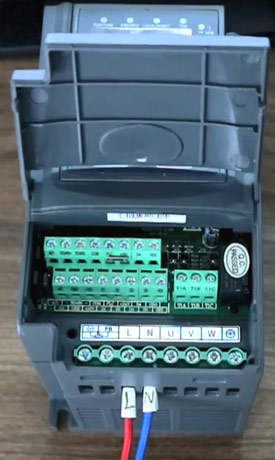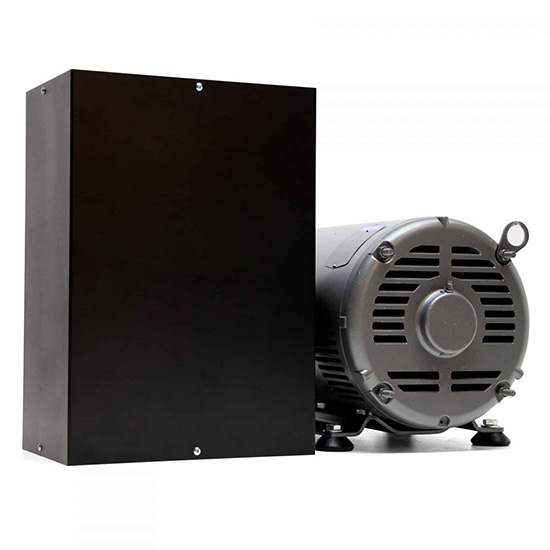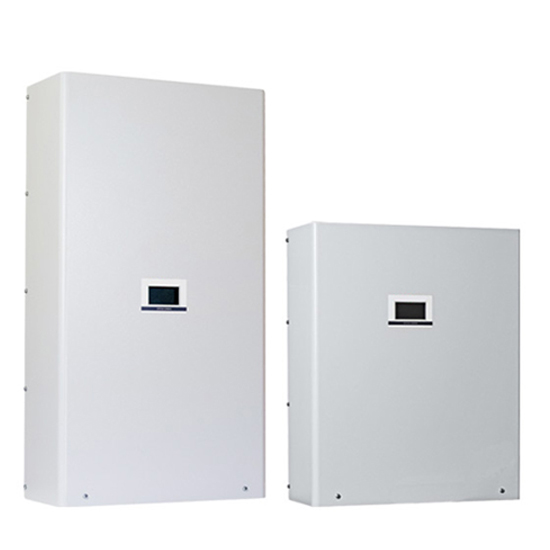Using VFDs To Convert Single-Phase To Three-Phase
Can a Variable Frequency Drive (VFD) convert my single-phase power supply to run a three-phase motor? Many who call us are looking at the ability to combine phase conversion and speed control in one device and like the potential to save money, hassle, and space. Like most things, however, there is not a simple answer to this question.
Single-phase AC power is common in many residential and agricultural settings, although it can also be seen in some industrial locations. It typically will only have two phases (L1 & L2) and possibly a neutral. It is common to see single-phase power for 120, 240, and occasionally 480 VAC systems. Three-phase supplies have three phases (L1, L2, & L3). Three-phase power in the United States is typically 240 and 480 VAC systems. There are some instances where up to 600 VAC systems are used as well.
Many people run in to problems with phase conversion when they get a new or used motor and find that the three-phase motor doesn’t play well with their single-phase power.
Yes, a VFD can power a three-phase motor with a single-phase input power supply, but phase conversion introduces many considerations that normally don’t factor into buying a VFD. In this article we will dig into VFDs that are built to convert single-phase to three-phase, how to use a regular VFD when custom VFDs are not an option, and other options for phase conversion when VFDs are not the best choice.
Single-Phase Input VFDs

Many manufacturers have lines of VFDs built to input single-phase power and output three-phase power. For example, the GK3000 series all have VFDs that come from the factory ready to operate on single-phase input power and create three-phase output power to run an induction motor.
In fact, the VFDs that are designed this way aren’t able to input three-phase power at all. This is because the AC power input only has two available terminals for the hot wires and therefore can’t take the additional wire required for three-phase input.
If what you need is a VFD that is ready off the shelf to convert single-phase to three-phase, this is often a great option for you. These VFDs are rated and sized based on the output three-phase current rating of your motor, making them simple to size correctly and easier to install.

to Power Supply
One drawback to VFDs is if the site ever updates to three-phase power. Although the cost of switching the entire system to three-phase power makes it unlikely to happen very often, if it does happen then these VFDs are not able to function on a three-phase system. These VFDs tend to be cheaper than most, but it still is a shame to throw them out if they become obsolete.
Using Standard VFDs for Phase Conversion
If your motor is too large for VFDs built for phase conversion, it is possible to use a standard VFD for your single-phase power supply. This is done by putting the two hot wires for single phase on the AC input for the VFD and leaving one input terminal open and unused. This does raise a few problems that you have to factor in.
Because you are now concentrating the same amperage on two phases instead of three, failure of your VFD’s input diodes is likely to happen. To resolve this issue, you have to oversize the VFD to account for larger ampacities. A conservative rule of thumb is to double the size of the VFD you need.
For example, if your motor Full Load Amps (FLA) is listed at 15, double that and size a VFD as if you needed to power a 30-amp motor. If you’re confronted with this situation, we recommend you call one of our experts who can help walk you through this sizing process and find the correct VFD for you.
If what you need is a VFD that is ready off the shelf to convert single-phase to three-phase, this is often a great option for you. These VFDs are rated and sized based on the output three-phase current rating of your motor, making them simple to size correctly and easier to install.

One drawback to VFDs that are set up this way is that they typically only run smaller motors. Both the Galt and Mitsubishi lines mentioned above only go up to 3 horsepower when set up for single-phase input, which limits the applications they can be used on.
Another problem is if the site ever updates to three-phase power. Although the cost of switching the entire system to three-phase power makes it unlikely to happen very often, if it does happen then these VFDs are not able to function on a three-phase system. These VFDs tend to be cheaper than most, but it still is a shame to throw them out if they become obsolete.
Other Phase Conversion Options
There are cases where VFDs are not the best option to convert phase. One of the most common problems we see with VFD phase conversion is that someone is trying to convert single-phase to three-phase for more than just a motor. While a VFD will do well at converting phase for an AC motor, it won’t work right at converting power for the peripheral devices you’re also trying to run, often including things like relays, lights, control power transformers, and other electronic devices.
If you are also not looking to control the speed of a motor, you will end up paying for a lot of functionality in a VFD that you won’t use. VFDs are primarily used to control the speed of a motor, so if you want a motor to run at full speed all the time, you might be over-engineering your system.
In cases like these, you should look at phase converters. There are several types, each with their positives and negatives. Static phase converters are a very budget-friendly option, but typically won’t run a motor at its full rating. Rotary phase converters do a great job of converting power, but have moving parts and create a lot of noise. Digital phase converters tend to perform best at getting the full rating out of a motor while converting phase, but are a more expensive option.



